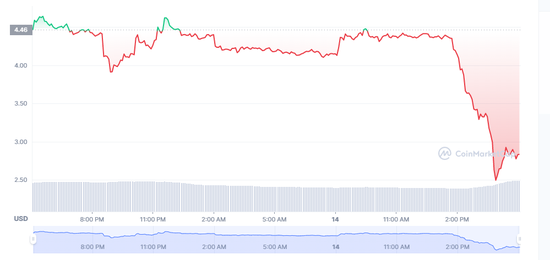your current location is:Home > Finance > depthHomedepth
Figma, which was only worth 100 million 4 years ago, turned around and sold 20 billion. As a result, users are calling it to run away?
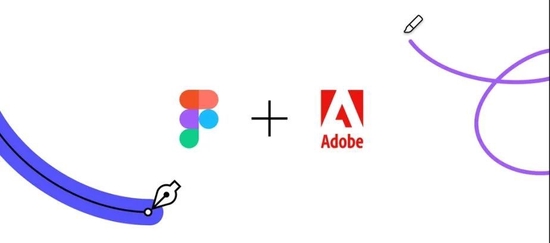
In recent days, amid reports of layoffs and falling valuations in tech companies, a huge acquisition has set off the investment community and the entire design circle - Adobe, the world's largest multimedia production software developer, announced a $20 billion price tag. Acquired Figma, a dark horse rookie in the design world.
The acquisition is not only Adobe's largest since its founding in 1982, it is also the largest acquisition to date in the design industry.
Figma is one of the few innovative companies that can be called "Silicon Valley speed" in recent years. At the beginning of 2018, Figma’s valuation just exceeded 100 million US dollars, and it is still just a niche design tool. By 2021, Figma’s valuation has skyrocketed 100 times to 10 billion US dollars, and its position in the design circle is already enough. Adobe products, which are in a monopoly position, have become a must-use tool for everyone in the product circle and design circle.
This time, just a year after its last funding round, Adobe has once again doubled the value of Figma, whose founder Dylan Field is only 30 years old this year.
It is worth noting that this acquisition did not usher in cheers and cheers in the circle after the announcement. Instead, it was "sprayed" by a group of developers on Twitter and Reddit, and they all expressed their regrets for Figma.
So, what kind of "love-hate" story does Figma have with Adobe?
|From the "poor and white" dropout to the entrepreneurial star worth over 100 million
Perhaps not even Dylan Field, the founder of Figma, could have foreseen that the product he created at his university would one day grow to such a massive scale. In 2018, he also rented a small apartment in San Francisco, drank a cup of coffee for one yuan a day, and wandered anonymously in the venture capital activities of Silicon Valley. But now that 4 years have passed, he has been worth over 100 million yuan and has become a rising star in the Silicon Valley startup scene.
Dylan Field was born and raised in Sonoma County, north of San Francisco. He liked to tinker with computers since he was a child. He showed a strong talent in the field of computing. After graduating from high school, he was admitted to Brown University's computer science major and served as a team of undergraduates in the major. co-chair.
 Participating in robotics competitions in high school, picture from Wikimedia Commons
Participating in robotics competitions in high school, picture from Wikimedia CommonsIn 2011, Dylan Field had the idea of starting his own business. At the age of 19, he stood out from hundreds of applicants and applied for the $100,000 entrepreneurial scholarship established by Peter Thiel. He officially dropped out of school to start his own entrepreneurial journey.
But the road to entrepreneurship has not been smooth sailing. Dylan Field's first drone project quickly fell through. Immediately afterwards, he officially founded Figma, but it took four full years to officially launch the first beta version, during which Figma was on the verge of closing.
Dylan Field's idea at the time was to build an online graphics editing platform that would allow everyone to collaborate and be creative without the constraints of local systems. But for the next year or two, Figma was in a state of savage development. There was only one concept, but the product roadmap and business model were not clear. When he met with investors in 2013, Dylan Field couldn't even tell what product he was working on and what problem it would solve, causing funding to hit a wall.
At that time, a large number of team members left and the company's finances were in trouble, which taught Dylan Field a solid lesson, and also let him calm down and reorganize Figma's product logic, find competing products like Adobe, and start software design from scratch. , let Figma gradually get on the right track.
At the end of 2015, Figma launched its first beta product, followed by the launch of its first public product at the end of 2016, which was free to the public and invited everyone to try it out and give feedback, and began to gain the first batch of users. In 2017, Figma launched its first paid product, and in 2019, the company opened up the Figma community, inviting designers, product managers, etc. to share freely.
As Figma spreads by word of mouth among users, it has also begun to gain the attention of some leading investment institutions, especially during the epidemic, which has rapidly expanded due to remote work.
At present, Figma has carried out a total of 6 rounds of financing. Among investors, we can see the presence of investment institutions such as Greylock Partners, Sequoia, A16Z, etc. It is reported that early investors such as Greylock, Kleiner Perkins, and Sequoia will all obtain from Figma. Return on investment of over $1 billion.
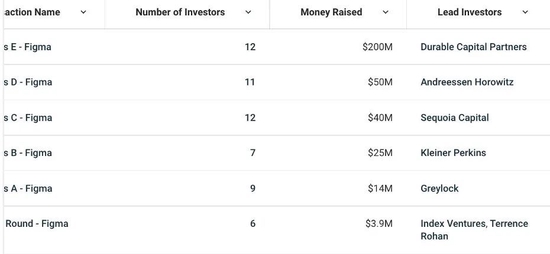 Figma's previous financing and investors, pictures from Crunchbase
Figma's previous financing and investors, pictures from Crunchbase|The sword points to Adobe, Figma rises as a dark horse
So, where exactly is Figma useful, and why has it grown so fast?
In fact, Figma's core breaking point is that it captures a pain point of the past design software - localization.
In today's Internet companies, design is no longer an independent business department. A product goes from creative output to design to prototype to final output. The whole process may involve UI/UX designers, R&D engineers, product managers, etc. different roles. In the past, design tools like Adobe and Sketch were localized, requiring designers to save them locally and then export them to others, which obviously greatly reduced production efficiency.
Figma has clarified its characteristics of "running based on web browsers" since its establishment. As a lightweight collaborative tool, it turns the entire product design process into a real-time, shared, collaborative, traceable, and transparent, user-friendly Design drafts can be saved as offline documents as in the past, or files can be stored in the cloud for sharing and collaboration in the form of links.
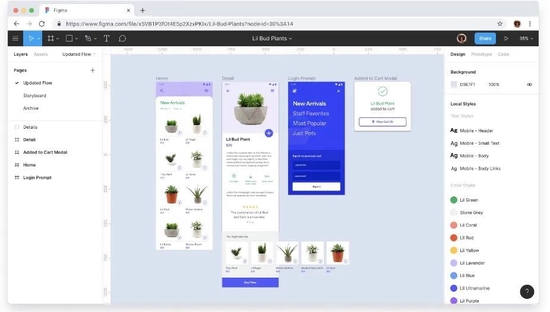 Image from Figma official website
Image from Figma official websiteThis function seems simple, but it actually solves the production process problems of a large number of Internet companies. Especially for large companies where many projects require the participation and feedback of different roles from different departments, Figma provides them with a "one-stop service".
In addition to its powerful design functions as a design software, Figma also has various functions such as markup, real-time discussion, cloud synchronization and so on. Some netizens once concluded that a Figma= Sketch (UI design) + InVision (prototype design) + Zeplin (labeling) + Dropbox (cloud synchronization) + Abstract (version history) + Craft-Freehand (real-time discussion) + Liveshare (real-time sharing) ) + Team Library (team component library)...
In addition, Figma also provides a wealth of API entries, which can be integrated with various software, greatly expanding its application scenarios, and making Figma a platform that not only serves design, but also serves the entire productivity process. Today, among the more than 4 million users of Figma, designers account for only half of them, and the other half are developers in different roles such as software engineers and product managers.
On Figma's official page, it also compares itself with a variety of popular design and productivity software, including Sketch, Adobe XD, InVision, Miro, and more. Interestingly, Figma was once in a state of needle-to-eye with Adobe. Not only did it list its advantages over Adobe XD on the official website, but also directly urged users to give up using Adobe XD as their own design tools.
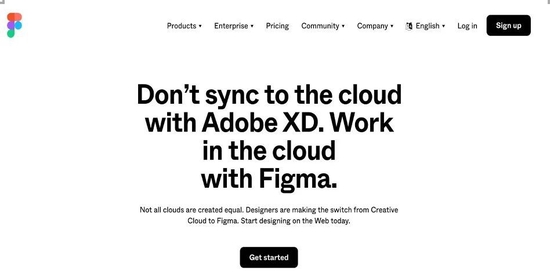 Image from Figma official website
Image from Figma official websiteIn recent years, with its ease of use and strong compatibility, Figma has risen rapidly among Internet companies. It has not only successfully broken through the moat established by Aodbe over the years, but has even left it far behind.
As of now, Figma's ARR this year has reached 400 million US dollars, a year-on-year increase of 100%, gross profit margin is as high as 90%, net income retention rate NDR (Net dollar retention) exceeds 150%, and it has positive operating cash flow. According to the latest 2021 design tools survey, Figma leads the design tool category, far ahead of Adobe XD and Sketch, and ranks first in almost all types of rankings.
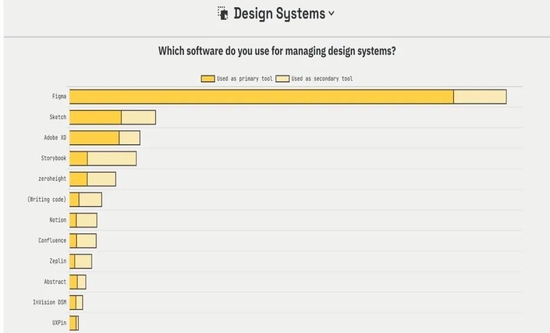 Image taken from https://uxtools.co/survey-2021/
Image taken from https://uxtools.co/survey-2021/| Adobe buys it if it can’t beat it, but it is boycotted by developers collectively
In June last year, Dylan Field tweeted, "Our goal is to become Figma, not Adobe." At that time, the comments were followed by a sound of support, and everyone left a message expressing their anticipation for the day when Figma eliminated Adobe.
However, under Adobe's huge acquisition offer, Figma still couldn't help but be moved this time.
According to the agreement announced by the two parties, the $20 billion acquisition will be paid in half in cash and half in stock. In terms of cash expenditure, Adobe may use cash + term loan to pay, if it passes the regulatory review smoothly If so, the transaction is expected to close in 2023.
But as soon as the news came out, not only did the deal not get a "blessing", but both companies were hit hard. On Adobe's side, shares plunged more than 17% that day, the company's biggest drop since 2010. Investors in the secondary market are not optimistic about the acquisition, because the acquisition may lead to large-scale debt borrowing by Adobe, and they are also skeptical about whether Adobe can operate Figma well.
After all, Adobe has always been known as the "software grave" in the market, and although it has been acquiring in recent years, it seems to be caught in a vicious circle of acquisitions and declines. For example, Macromedia, which had Flash multimedia players, Fireworks network graphics tools and other products, was once a hot product in the market, but after it was acquired by Adobe in 2005, it began to decline all the way, until it was completely gone.
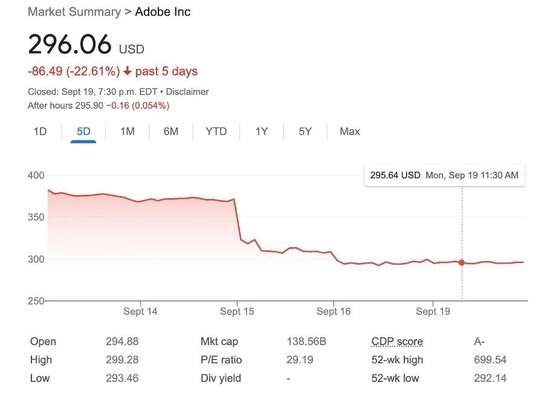 Image via Google
Image via GoogleFigma has also suffered an "anger attack" from users. Many designers have said that they have endured Adobe's various overlord clauses for many years, and finally waited for a young tool like Figma to help them escape the "fire pit", but now they have to jump back? What about not doing Adobe, is the face-slap come so fast?
Many users even directly left a message saying, well, Figma is "dead", let's go back to Adobe.
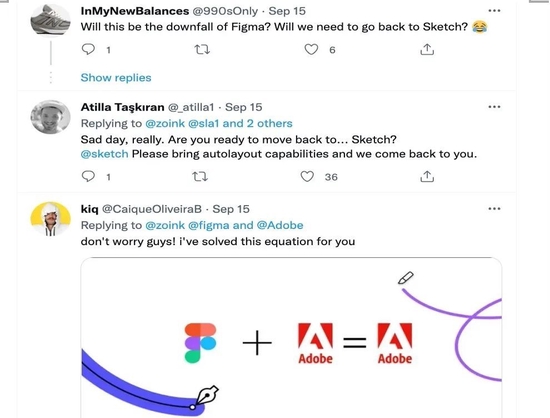 Image via Twitter
Image via TwitterAn important feature that users have loved about Figma for a long time is that it is always free for individual users, and various Pro features are also free for the general public. Figma's community is also very open, and everyone can freely share templates, plugins, etc. But once the acquisition is completed, Figma will inevitably be included in Adobe Creative Cloud, so don’t think about it for free, and the cost standards must be in line with Adobe’s other services.
In addition, Adobe's notoriously closed and stale community is undoubtedly a shackle to designers who are used to Figma's free and open atmosphere. Many people also feel that the young Figma is out of tune with the "old" Adobe in temperament, and they are worried that it will be assimilated in the future.
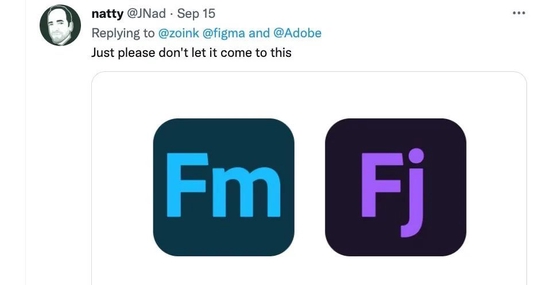 Image via Twitter
Image via TwitterHowever, according to Dylan Field, even after the acquisition, Figma will continue to operate independently, he will continue to manage Figma, and there are no short-term plans to adjust prices.
Although for Figma, being acquired by Adobe at a high price is undoubtedly a huge commercial success, it deserves all the flowers and applause. But from the user's point of view, seeing such a young company with infinite potential to pierce Adobe's curtain finally chooses to surrender to Adobe's subordinates, still makes people feel a little embarrassed and regretful.
Previous:The App Store actively embraces advertising, blame the Apple veteran for "halfway"?
Next:Biden's 9 reports "hiding" the future of Web3 in the United States
related articles
Article Comments (0)
- This article has not received comments yet, hurry up and grab the first frame~







